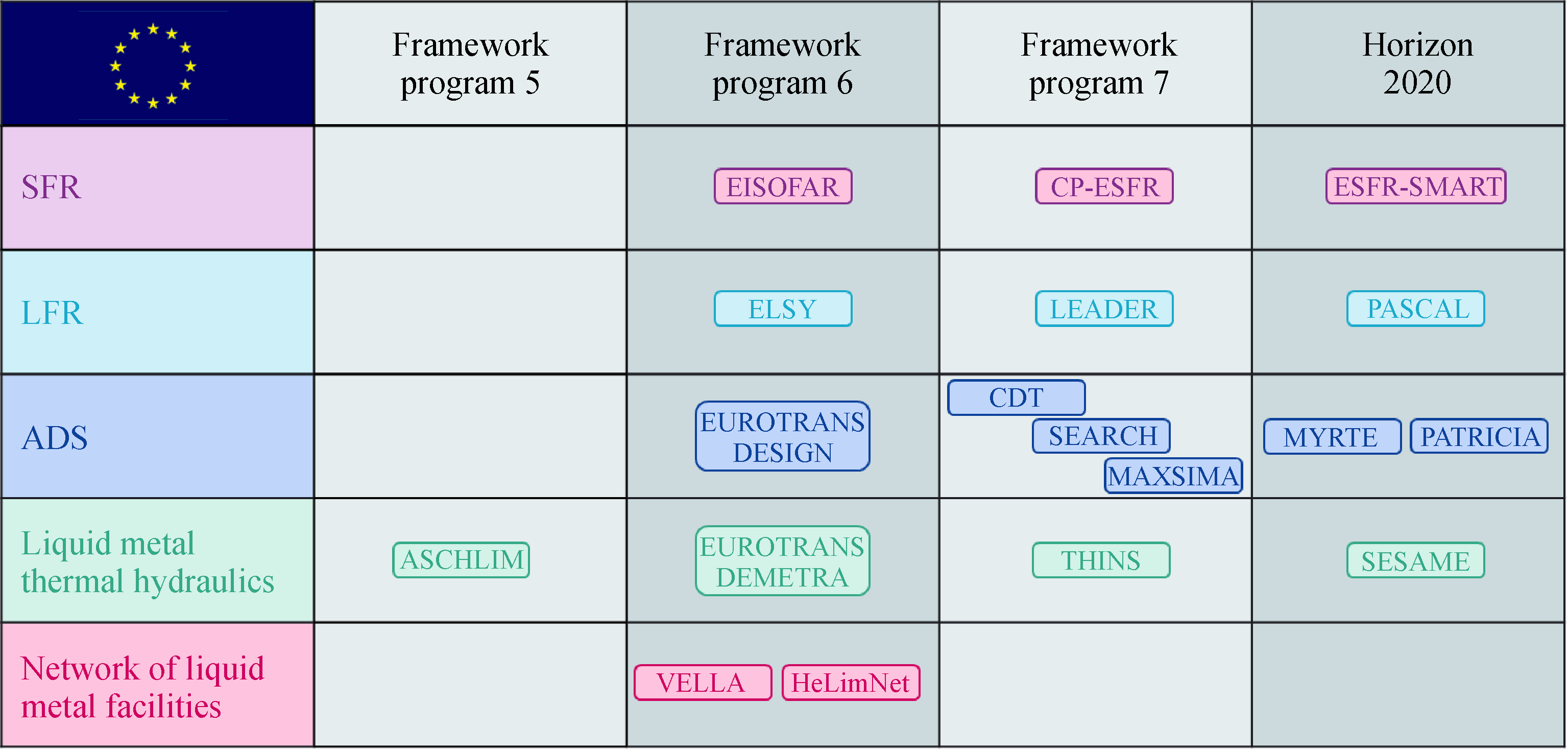1 Introduction
2 European collaborative projects
Tab.1 Collaborative projects in the field of liquid metal thermal hydraulics sponsored by the European Commission |
| Project | Duartion | EC Budget (M€) | Coordinator (Country) | Topic |
|---|---|---|---|---|
| ASCHLIM | 2002 | 0.1 | SCK (Belgium) | Assessment of applicability of computational fluid dynamics (CFD) for heavy liquid metals |
| EUROTRANS DESIGN | 2005–2010 | 6.1 | SCK (Belgium) | Design of a proton accelerator driven system |
| EUROTRANS DEMETRA | 2005–2010 | 5.3 | KIT (Germany) | Development of materials and liquid metal technologies |
| VELLA | 2006–2009 | 0 | ENEA (Italy) | Virtual European laboratory for heavy liquid metal technology |
| ELSY | 2006–2010 | 2.9 | ANN (Italy) | Demonstration of feasibility of pure lead cooled nuclear reactor |
| EISOFAR | 2007–2008 | 0.3 | CEA (France) | European roadmap for SFR technology |
| CDT | 2009–2012 | 2.0 | SCK (Belgium) | Centralization of research for transmutation |
| CP-ESFR | 2009–2013 | 5.8 | CEA (France) | Development of a large Generation IV sodium fast reactor |
| HeLimNet | 2010–2012 | 0.5 | CNR (Italy) | Harmonizing research in the field of heavy liquid metal technologies |
| LEADER | 2010–2013 | 3.0 | ANN (Italy) | Conceptual design of a European lead fast reactor demonstrator |
| THINS | 2010–2015 | 5.9 | KIT (Germany) | Thermal hydraulics research for all Generation IV reactors |
| SEARCH | 2011–2015 | 5.7 | SCK (Belgium) | Research supporting licensing process of MYRRHA |
| MAXSIMA | 2012–2018 | 5.5 | SCK (Belgium) | Supporting safety assessment of MYRRHA |
| MYRTE | 2015–2019 | 12.0 | SCK (Belgium) | Research to support the demonstration of transmutation |
| SESAME | 2015–2019 | 5.2 | ENEA (Italy) NRG (Netherlands) | Thermal hydraulics safety methods for liquid metal fast reactors |
| ESFR-SMART | 2017–2021 | 5.0 | PSI (Switzerland) | Enhancing safety of Generation IV sodium fast reactors |
| PASCAL | 2020–2024 | 3.8 | ENEA (Italy) | Safety research for innovative heavy liquid metal cooled reactors |
| PATRICIA | 2020–2024 | 6.5 | SCK (Belgium) | Safety related research supporting licensing of MYRRHA |










